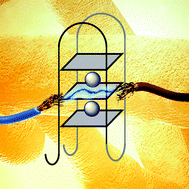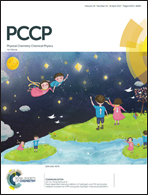Exposing the G-quadruplex to electric fields: the role played by telomeres in the propagation of DNA errors†
Abstract
To protect their core machinery from the attack of exogenous agents, cells locate DNA in their nucleus. Nevertheless, some reactive chemical species and physical agents might reach DNA and alter its natural double helix structure. For instance, pulsed electric fields can be used to selectively rewrite the stored genetic information. However, for such modification to be effective, one needs, as a prerequisite, that the replication mechanism is not stopped by the field, so that the changes propagate over the following generations. Here, we use theoretical calculations to demonstrate that while such fields lead to permanent noncanonical Watson–Crick guanine–cytosine (GC) base pairs, the G-quadruplex motifs present in telomeres can more effectively preserve their native forms. Indeed, G-quadruplexes “resist” the perturbations induced by field strengths going up to 60 × 10−4 a.u., a figure constituting the upper limit before the complete destruction of the double helix architecture. Since the induced errors in the DNA base pairs are not transcribed into the telomeres, electric fields can indeed be used as a source of selective mutations in the genetic code.



 Please wait while we load your content...
Please wait while we load your content...